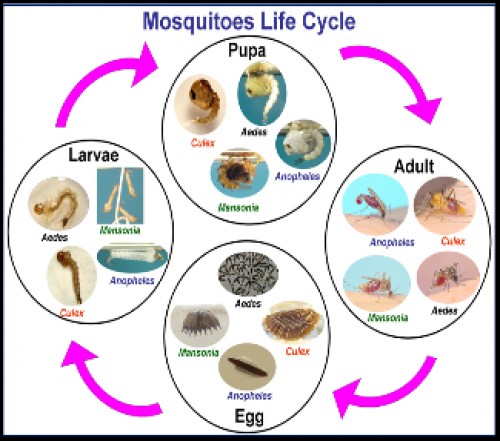Environmental risk factors in relation to occurrence of vector borne disease epidemics: Remote sensing and GIS for rapid assessment, picturesque, and monitoring towards sustainable health
Author(s): M Palaniyandi, PH Anand and T Pavendar
Abstract: Illnesses caused by pathogens and parasites in human populations that are spread by arthropod insects are called vector-borne diseases. The prevalence of vector-borne diseases contribute one-sixth of the illness and disability worldwide, especially, imposes large economic burden and casualty in the world, and has been increasing public health important, especially, challenging problems in more than 100 tropical countries and being affects more than 50% of the population in the world. The both vertical and horizontal structure of the epidemics have become major challenging problems in India. The study of environmental aspects in relation to occurrences of vector borne disease epidemics provides the indicators to stratification of probability of transmission risk. Gaining the preeminent understanding of the spatial aspects of vector borne disease transmission, vector ecology, vector breeding habitats, and the occurrences of vector borne disease epidemics in different part of the country through mapping, monitoring and surveillance of the epidemics; towards the achievements of disease transmission control and management, using remote sensing and geographical information systems (GIS) is the most productively significant scientific methods. The hybrid techniques of remote sensing and GIS are being used to rapid epidemiological mapping of the relevant information to understanding the spatial variation of the vector biodiversity, vector abundance, and the active infection state of vector borne disease transmission, disease surveillance, and perhaps, provides the disease epidemiological information along with geo-coordinates of site specification. The information relevant to the environmental variables in relation to the occurrences of vector borne diseases provides vertical and horizontal structure of the disease transmission risk, and to assess the community at risk of disease infection in different parts of the country, and thus, datum of guidelines to apply suitable prevent measures to control the epidemic transmission early in advance.
 Fig.:
Fig.: The vector mosquitoes of vector borne disease transmission in the world
How to cite this article:
M Palaniyandi, PH Anand, T Pavendar. Environmental risk factors in relation to occurrence of vector borne disease epidemics: Remote sensing and GIS for rapid assessment, picturesque, and monitoring towards sustainable health. Int J Mosq Res 2017;4(3):09-20.



